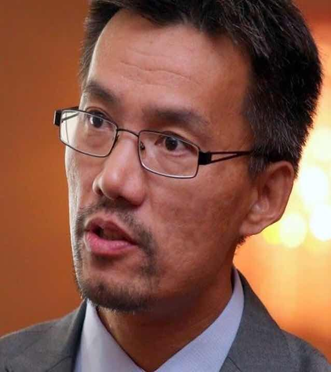
您現在的位置:
首頁-
活動資訊
【百家大講堂】第199 期👱🏼: 瑞典電力工業:未來與挑戰
日期🏂🏿:2019-05-21 | 訪問量:
講座題目: 瑞典電力工業:未來與挑戰
報 告 人❤️🔥: Ou Tang
時 間🧑🦯➡️: 2019年 月 日 午 : 0- : 0
地 點: 中關村校區主樓241室
主辦單位:意昂平台、管理與經濟學院
報名方式🌛:登錄意昂官网微信企業號---第二課堂---課程報名中選擇“【百家大講堂】第199期🤝: 瑞典電力工業:未來與挑戰 ”
【主講人簡介】

Ou Tang現任瑞典林雪平大學生產經濟學教授🧑🏽🏭。Ou Tang教授從事於庫存模型、製造計劃和控製系統、閉環供應鏈、供應鏈風險管理、可持續供應鏈管理和中國相關運營管理問題的研究♈️👩🏽🦳。發表學術論文100余篇,其中在《European Journal of Operational Research》、《Production and Operations Management》🏃♂️➡️👨🏼✈️、《International Journal of Production Economics》等國際期刊發表論文60余篇💠。Ou Tang教授是國際期刊《International Journal of Production Economics》的區域主編,也是國際庫存研究協會的前任主席🧑🏻⚖️。
主講人簡介(英文)
Ou Tang is Professor of Production Economics at Linköping University, Sweden. His research includes inventory modelling, manufacturing planning and control systems, closed loop supply chains, supply chain risk management, sustainable supply chain management and China related operations management issues. He has published more than 100 scientific articles, including moren than 60 appearing in international journals such as the European Journal of Operational Research, International Journal of Production Economics, Production and Operations Management and others. He serves as the editor for the International Journal of Production Economics and is the past president of International Society of Inventory Research.
【講座信息】
能源政策對可再生能源的投資和傳統能源的退役有著至關重要的影響。瑞典的目標是擴大可再生電力生產🗂👺,並隨後減少二氧化碳排放。為了實現這一目標🎃,瑞典能源署(Swedish Energy Agency)頒發了電力證書作為激勵措施🧘🏻♂️。 然而🪛,價格問題以及可再生能源的間歇性可用性和未來燃料成本的不確定性將嚴重影響電力生產商的經濟業績。 只有在了解了這些因素的相互作用之後,我們才能確定公司的商業模式,以實現電力部門的可持續發展🚶🏻♂️➡️。因此🤯,本報告首先旨在應用系統動力學方法來整合戰略決策(如擴容/退役)和運營特征(如電力生產中的隨機性和季節性因素)。該模型強調了電力行業重要因素之間復雜的非線性相互作用。另一方面,核電站的退役是一個漫長的過程🙆🏿,這主要是由於核電站的巨額投資以及由此產生的沉沒成本。因此,從市場的角度來看,間歇性能源的增加意味著核能需要調查其他收入來源。隨著對未來電動汽車市場的預期,以及對氫在其他應用領域的興趣增加,生產氫已經成為一個潛在的收入來源,特別是在存在過剩電力的情況下。本報告的第二個目的是研究以瑞典核電為背景投資氫生產的可行性。研究結果表明🙆,能源政策不應以孤立的方式引入🧑🏻,而是需要將可再生能源的激勵措施與諸如核退役等其他決定結合起來。此外,該項研究還預測了未來電價的上漲,而在容量配置被水電↔️、生物質能和風能改變並占據主導地位後,電價將更加波動。該研究為決策者和管理者提供了指導方針,以便為其業務以及整個電力部門的健康發展做出更明智的決策。
內容簡介(英文)
Energy policy has a vital impact on the investment in renewables and on the decommissioning of traditional ones. Sweden aims to expand the renewable electricity production and subsequently to reduce CO2 emissions. To achieve this, the Swedish Energy Agency issues electricity certificates as an incentive. However, the price issues, together with the intermittent availability of renewable energy sources and the uncertainty of future fuel costs, will significantly affect the economic performance of the electricity producers. It is only after understanding the interaction of those factors that we can define companies’ business models for achieving a sustainable development in the electricity sector. This presentation thus first aims to apply a system dynamics approach to integrate both strategic decisions such as capacity expansion/decommission, and operational features such as randomness and seasonal factors in electricity production. The model highlights the complex and nonlinear interaction of important factors in the electricity sector. On the other hand, decommissioning nuclear power plants is a long process not least caused by the substantial investments and consequently sunk costs in the plants. Thus, from a market perspective the increase in intermittent power sources means that nuclear needs to investigate other revenue streams. As the expectation of the future electric vehicles market, as well as the increased interest in hydrogen for other applications, producing hydrogen has become a potential source of income, particularly when surplus electricity exists. The second aim of this presentation is studying the feasibility of investing in hydrogen production using Swedish nuclear power as a background.
The study results indicate that the energy policy should not be introduced in an isolated manner, but rather need to incorporate the incentives of renewables with other decisions such as nuclear decommission. Additionally, this study predicts an upcoming increase in electricity price, as well as a more volatile price after the capacity profile has been changed and dominated by hydro, biomass and wind. This study provides guidelines for policy makers and managers to make better-informed decisions for a healthy development of their businesses as well as of the entire electricity sector.

